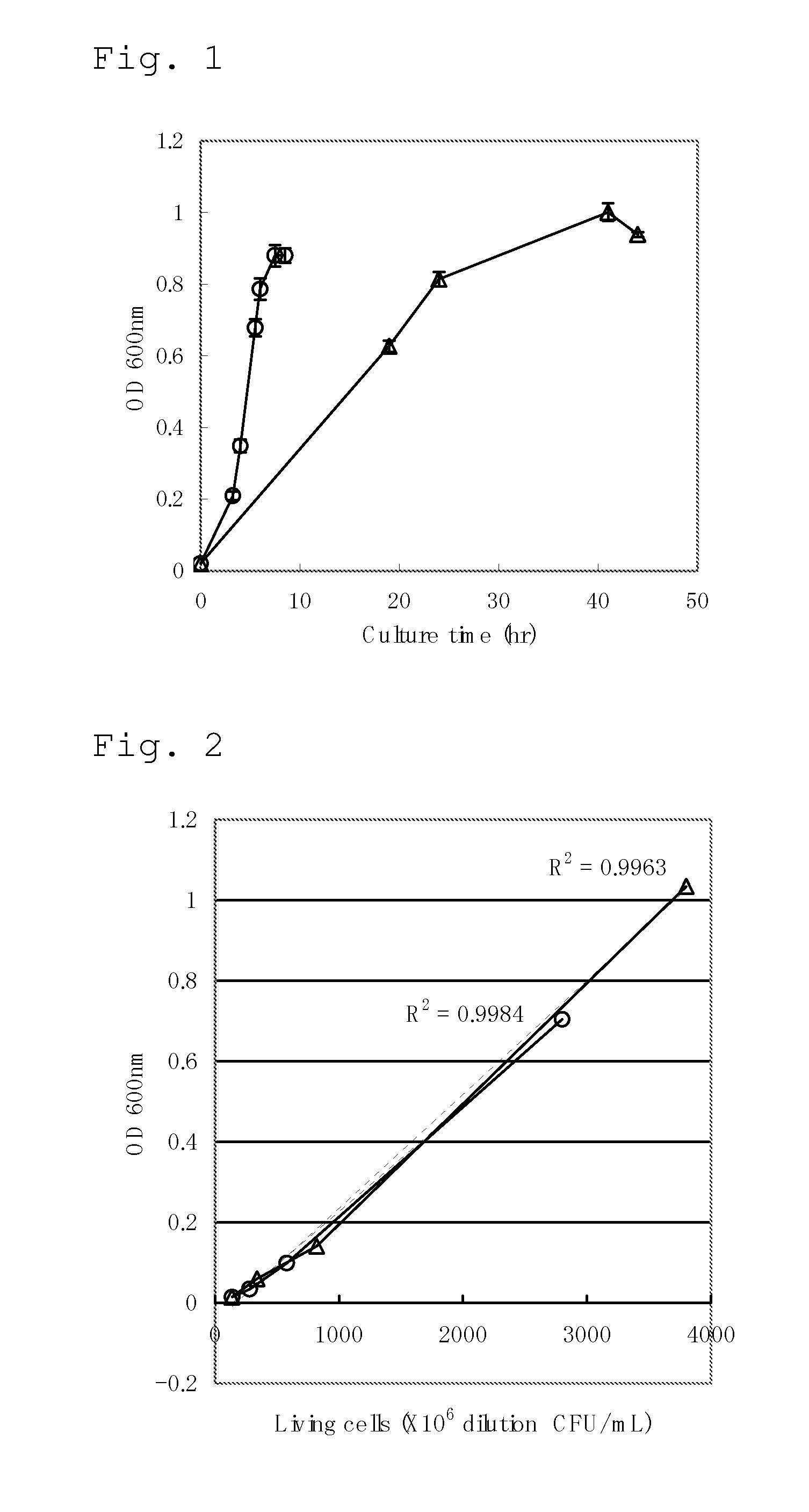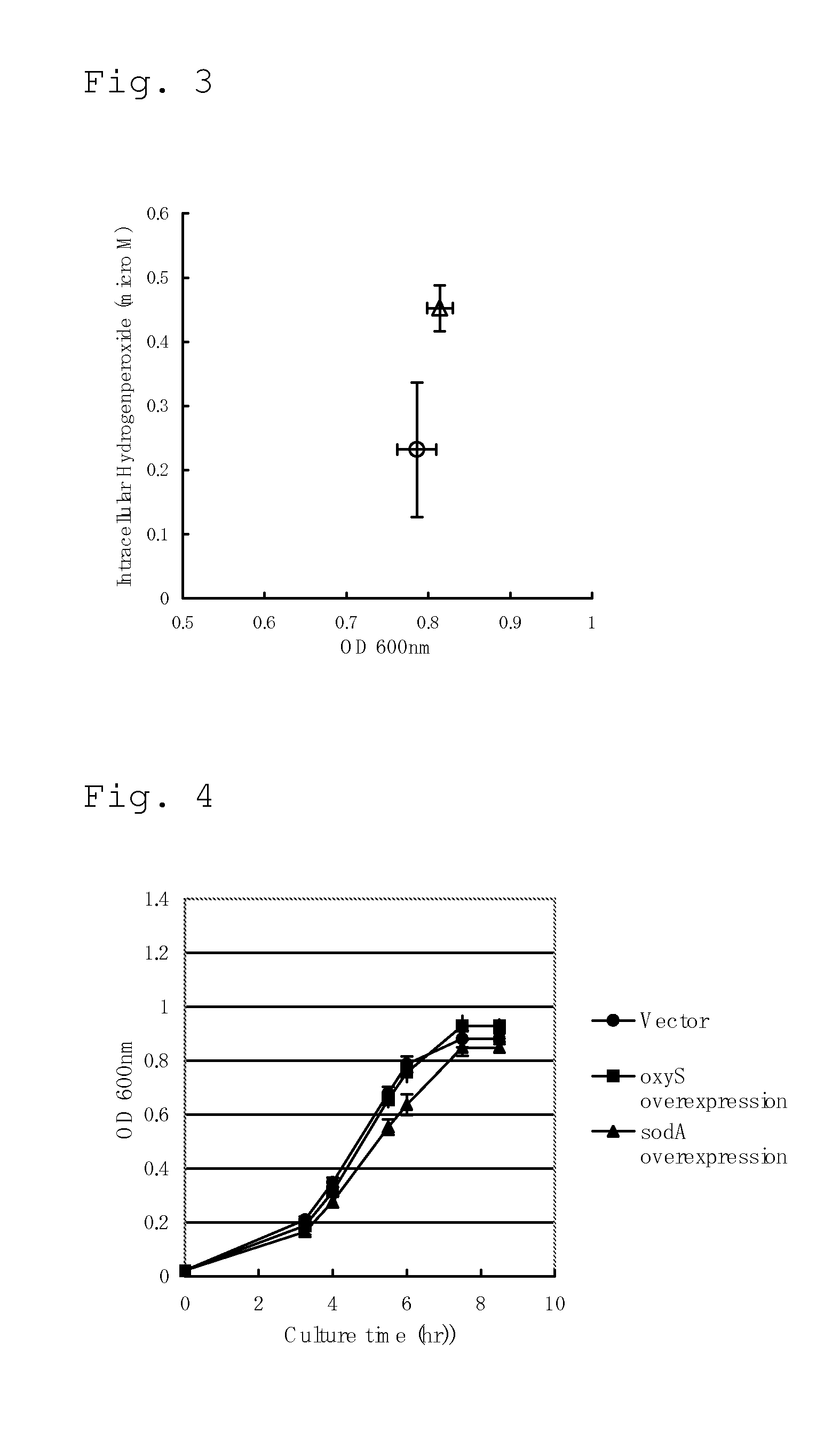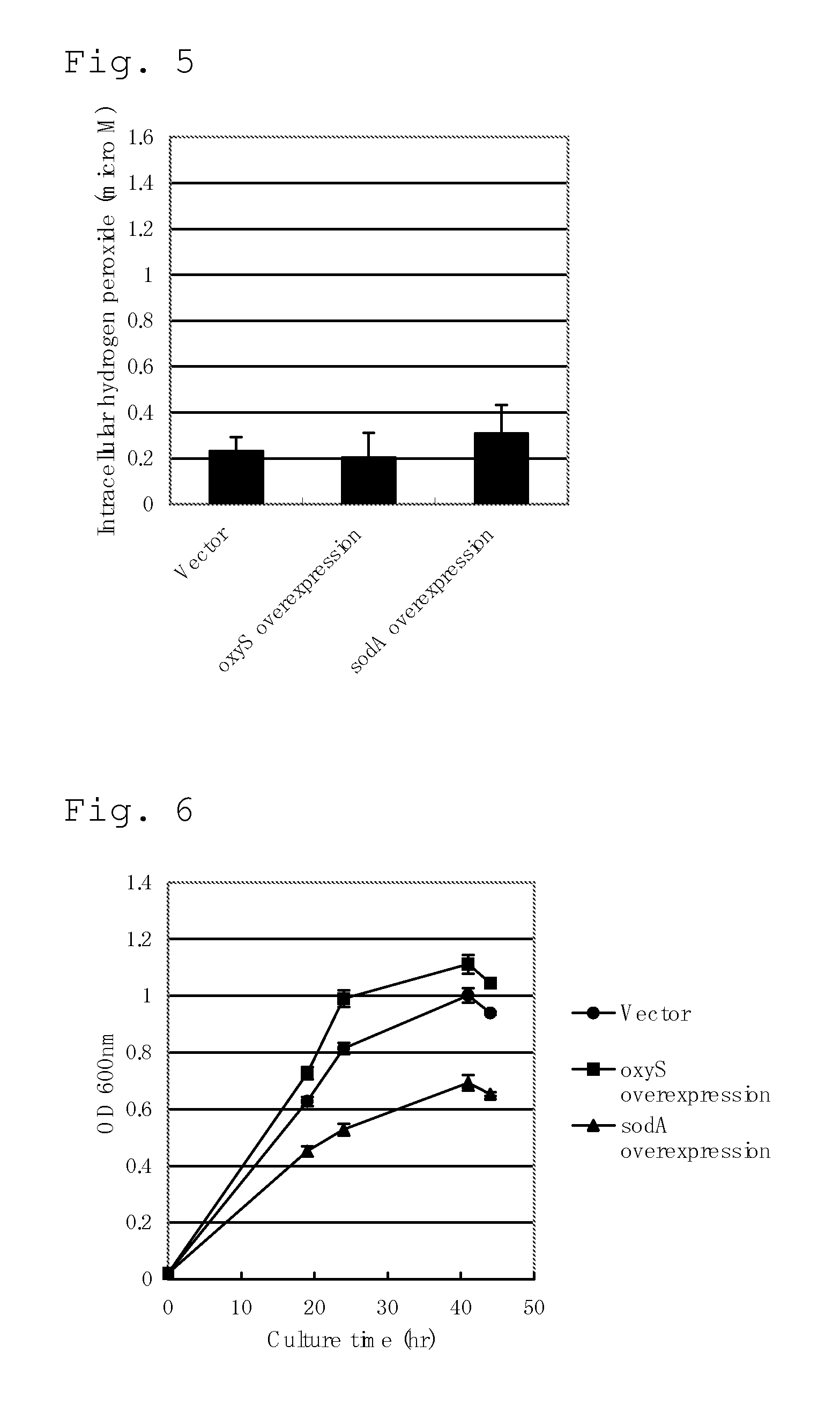Method for Producing an L-Amino Acid
a technology of lamino acid and l-amino acid, which is applied in the direction of peptides, chemical cell growth stimulation, fermentation, etc., can solve the problems of not being able to report the relationship between the superoxide dismutase and the reported production of l-amino acid
- Summary
- Abstract
- Description
- Claims
- Application Information
AI Technical Summary
Benefits of technology
Problems solved by technology
Method used
Image
Examples
example 1
Culture of Escherichia coli in Minimal Medium Containing Fatty Acid as a Sole Carbon Source and Measurement of Intracellular Hydrogen Peroxide Concentration
[0290]MG1655 / pTWV228 strain obtained by introducing plasmid pTWV228 (Takara Bio Inc.) into the Escherichia coli MG1655 strain (ATCC 47076) in a conventional manner was cultured at 37° C. in the L medium containing 50 mg / L of ampicillin until the final OD600 became about 0.6, then a 40% glycerol solution was added to the culture medium in the same volume as that of the culture medium, and the mixture was stirred, divided into appropriate volumes, and stored at −80° C. This preparation was called glycerol stock.
[0291]The glycerol stock of the MG1655 / pTWV228 strain was scraped off with a loop, and one loop of the cells were plated on the M9 glucose agar medium, and cultured for 24 hours as static culture. The grown cells were scraped off, suspended in a 0.85% NaCl aqueous solution, and inoculated into 10 mL of the M9 sodium oleate l...
example 2
Culture of Hydrogen Peroxide Secretion-Promoted Escherichia coli in Minimal Medium Containing Fatty Acid as Sole Carbon Source and Measurement of Intracellular Hydrogen Peroxide Concentration
[0303]Construction of oxyS Gene-Amplified Escherichia coli
[0304]In order to confirm the effect of amplification of the oxyS gene concerning contribution to growth of Escherichia coli in culture using a fatty acid as a carbon source, a plasmid for amplifying oxyS was constructed. PCR was performed using the synthetic oligonucleotides having the nucleotide sequences of SEQ ID NOS: 1 and 2 as the primers and the chromosomal DNA of the Escherichia coli MG1655 strain as the template. The PCR product was purified and ligated to the vector pTWV228 (Takara Bio Inc.) digested with SalI to construct a plasmid pTWV228-oxyS for amplification of oxyS.
[0305]MG1655 / pTWV228-oxyS strain obtained by introducing the plasmid pTWV228-oxyS into the MG1655 strain in a conventional manner was cultured at 37° C. in the...
example 3
L-Lysine Production with oxyS Expression-Enhanced Strain
[0314]Introduction of Plasmid for Enhancing oxyS Expression into L-Lysine-Producing Bacterium
[0315]In order to confirm the effect of amplification of the oxyS gene concerning contribution to L-lysine-producing ability, pTWV228-oxyS prepared in Example 2 was introduced into the L-lysine-producing bacterium WC196ΔcadAΔldcC / pCABD2 constructed by the method described in U.S. Patent Application Pub. No. 2006 / 0160191 to construct WC196ΔcadAΔldcC / pCABD2,pTWV228-oxyS strain. The WC196ΔcadAΔldcC (also referred to as “WC196LC”) strain is a strain obtained from the Escherichia coli WC1-96 strain by disrupting the lysine decarboxylase genes, cadA and ldc, according to the method using the Red-driven integration method (Datsenko K. A., Wanner, B. L., 2000, Proc. Natl. Acad. Sci. USA, 97, 6640-6645) and the excision system derived from λ-phage (Cho, E. H., Gumport, R. I., Gardner, J. F., 2002, J. Bacteriol., 184:5200-5203) in combination (re...
PUM
| Property | Measurement | Unit |
|---|---|---|
| concentration | aaaaa | aaaaa |
| oxidation stress | aaaaa | aaaaa |
| concentrations | aaaaa | aaaaa |
Abstract
Description
Claims
Application Information
 Login to View More
Login to View More - R&D
- Intellectual Property
- Life Sciences
- Materials
- Tech Scout
- Unparalleled Data Quality
- Higher Quality Content
- 60% Fewer Hallucinations
Browse by: Latest US Patents, China's latest patents, Technical Efficacy Thesaurus, Application Domain, Technology Topic, Popular Technical Reports.
© 2025 PatSnap. All rights reserved.Legal|Privacy policy|Modern Slavery Act Transparency Statement|Sitemap|About US| Contact US: help@patsnap.com



